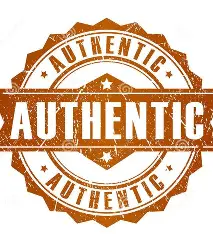Table of Contents
Introduction
As we step into an era of technological evolution, the Metaverse and Web3 are poised to redefine how brands interact with audiences. Unlike traditional digital platforms, these emerging technologies emphasize decentralization, immersive experiences, and user ownership. For marketers and business leaders, this isn’t just a trend—it’s a transformation.
This blog explores the future of branding in the Metaverse and Web3, detailing the strategies, challenges, opportunities, and tools that will shape tomorrow’s brand narratives.
What Is the Metaverse?
The Metaverse refers to a collective virtual space created by the convergence of virtually enhanced physical and digital reality. It includes:
- Virtual Worlds (like Decentraland or Roblox)
- Augmented Reality (AR) and Virtual Reality (VR) experiences
- Digital Avatars
- Persistent, shared environments
In simpler terms, it’s the internet brought to life—where users don’t just browse but live and interact.
What Is Web3?
Web3 is the third generation of the internet, emphasizing:
- Decentralization (via blockchain)
- Token-based economics
- User data ownership
- Interoperability
- Smart contracts
Web3 empowers users and content creators rather than centralized tech platforms, allowing for transparency and control over digital identity and assets.

Why Brands Should Care
Brands that ignore these shifts risk becoming irrelevant. Here’s why it matters:
- Audience Migration: Gen Z and Alpha are digital natives who spend significant time in virtual spaces.
- Digital Ownership: NFTs and crypto assets have changed how people value and interact with digital content.
- Experiential Expectations: Consumers crave immersive, personalized experiences.
- Trust & Transparency: Blockchain offers traceability and authenticity, which enhances brand credibility.
Krishna bansal% – Content writer
nouralhamwi.com/post/branding-in-the-metaverse-how-virtual-worlds-are-shaping-brand-presence
How Branding Is Evolving
1. From Storytelling to Storyliving
Brands are no longer just telling stories—they are creating immersive narratives where users participate. Instead of watching a campaign, users experience it.
Example: Nike’s Nikeland on Roblox allows users to play games, try virtual shoes, and interact with other fans, bringing the brand world to life.
2. From Logos to Digital Avatars
Brand mascots or characters can now be avatars interacting directly with users in the Metaverse, offering customer service, entertainment, and engagement.
Example: Wendy’s launched an avatar in Fortnite that “waged war” on frozen beef, aligning with their brand message.
3. From Banners to NFTs and Virtual Goods
Brands are launching NFTs and limited-edition digital assets that can be worn, traded, or used in virtual worlds. This taps into digital scarcity and fandom.
Example: Gucci’s virtual sneakers were sold for $17.99 on Roblox—proving the appetite for digital luxury.

Key Opportunities for Branding in the Metaverse & Web3
1. Immersive Brand Worlds
Create 3D spaces where users can explore your brand identity. This could be a virtual store, art gallery, or experience zone.
Example: Hyundai’s Mobility Adventure on Roblox features virtual test drives and games for car enthusiasts.
2. NFT Loyalty Programs
NFTs can act as membership passes, loyalty rewards, or exclusive access tokens.
Example: Starbucks Odyssey uses NFTs to offer perks to its most loyal customers in a gamified way.
3. Creator Collaboration
Partner with creators, influencers, or digital artists to co-create branded items or experiences that feel authentic.
Example: Adidas collaborated with Bored Ape Yacht Club and NFT influencers to launch “Into the Metaverse” NFT collection.
4. Gamified Brand Engagement
Leverage gaming elements to drive interaction—quizzes, quests, virtual treasure hunts, etc.
Example: Louis Vuitton created a game “Louis: The Game” where players collect monogrammed candles and learn about brand history.

The Role of Blockchain in Branding
Blockchain enables:
- Authenticity: Track and verify product provenance (important for luxury brands).
- Ownership: Allow users to own parts of the brand story (via NFTs).
- Loyalty: Offer transparent and decentralized loyalty points.
- Access: Token-gated communities or events.
Challenges to Overcome
1. Technical Complexity
Creating Metaverse experiences requires advanced 3D modeling, blockchain integration, and AR/VR capabilities.
2. Digital Inequality
Not everyone has access to VR headsets or high-speed internet, potentially excluding parts of your audience.
3. Privacy Concerns
Web3 gives power to users—but brands must respect data privacy and transparency in how they interact.
4. Regulatory Uncertainty
NFTs and cryptocurrencies exist in a gray legal area. Brands need to stay informed about legal developments in different regions.
Best Practices for Future-Ready Branding
1. Build for Community
Shift from audiences to communities. Empower your users to co-create and engage on their terms.
2. Prioritize Utility Over Hype
Don’t launch NFTs just for PR. Ensure they provide real value—access, utility, or exclusive experiences.
3. Stay Authentic
Digital platforms magnify inauthenticity. Be true to your brand voice and purpose.
4. Embrace Co-Creation
Let users participate in your brand evolution. This fosters deeper loyalty.
5. Test and Iterate
Start small with pilot projects. Gather feedback and scale what works.

Future Trends to Watch
1. Phygital Integration
Merging physical and digital experiences—like buying a physical product that comes with an NFT twin.
Example: Nike’s Cryptokicks are virtual sneakers paired with physical versions.
2. AI + Metaverse Branding
AI-powered avatars and chatbots can provide real-time, lifelike customer support and engagement.
3. Virtual Real Estate Branding
Brands will invest in virtual real estate on platforms like Decentraland or The Sandbox to create digital HQs, storefronts, or event venues.
4. Interoperable Avatars & Skins
As Metaverse platforms become interoperable, brand assets like digital clothes or accessories will be portable across games and spaces.
5. DAOs and Community-Led Brands
Decentralized Autonomous Organizations (DAOs) will allow fans to vote on product launches, campaigns, and brand direction.
Real-World Case Studies
1. Coca-Cola
Launched NFT collectibles featuring digital artwork and hosted events in Decentraland. Their strategy fused nostalgia with innovation.
2. Nike + RTFKT Studios
Acquired NFT brand RTFKT to lead its digital product division, launching Cryptokicks and owning virtual fashion space.
3. Adidas
Teamed up with Bored Ape Yacht Club, Pixel Vault, and NFT influencers to drop exclusive NFT fashion pieces.
4. Dolce & Gabbana
Sold a collection of digital fashion NFTs for millions, blending high fashion with blockchain.

Steps to Prepare Your Brand
- Educate Your Team: Understand key Web3 and Metaverse concepts.
- Define Objectives: Are you aiming for awareness, loyalty, or sales?
- Choose the Right Platform: Pick Metaverse platforms that align with your audience.
- Develop Digital Assets: 3D models, NFTs, VR/AR content.
- Partner with Experts: Collaborate with blockchain developers, digital artists, and immersive designers.
- Launch Small: Start with a campaign or NFT drop.
- Engage and Iterate: Track performance, collect feedback, and evolve.
Conclusion
The Metaverse and Web3 are not just buzzwords—they’re blueprints for the next internet era. Brands that embrace these changes with openness, creativity, and strategic intent will stand out as pioneers. From digital collectibles to immersive experiences, the way we express brand identity is changing forever.
Branding in the future won’t just be seen or heard—it will be felt, experienced, and lived.
FAQs
Q1. Is the Metaverse just a trend?
No. While still evolving, the Metaverse represents a long-term shift in how users interact with digital environments and brands.

Q2. Do small brands need to be in the Metaverse?
Not necessarily. But exploring Web3 tools like NFTs, token-gated content, or community building can offer valuable engagement opportunities even for smaller players.
Q3. Are NFTs still relevant for branding?
Yes, if used meaningfully. NFTs can offer utility, access, and identity—beyond just being collectibles.
Q4. What industries will benefit the most?
Fashion, gaming, entertainment, retail, and education are already seeing major transformations through these technologies.
Q5. How can I start with limited resources?
Start small: create a basic virtual event, launch a limited NFT, or partner with existing platforms. Learning and adapting is key.